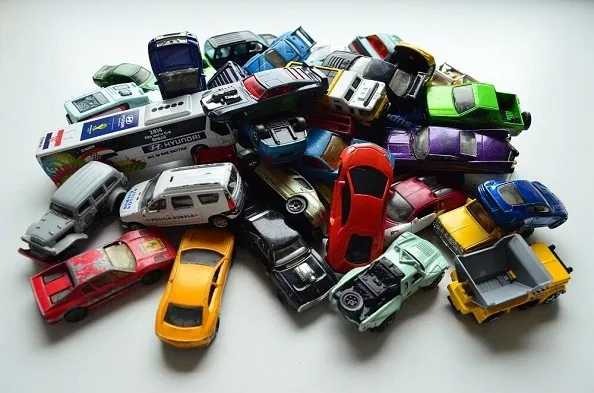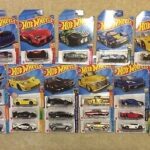Hot Wheels vs. Matchbox Toy Cars: A Detailed Comparison
Introduction
Toy cars have been a beloved part of childhood for generations, offering endless hours of imaginative play. Among the most iconic brands in this realm are Hot Wheels and Matchbox, each with its own unique appeal and devoted following. Despite their common category, Hot Wheels and Matchbox cars have distinct differences in terms of history, design philosophy, manufacturing, and collector culture. This comprehensive article explores these differences in detail, examining the unique characteristics that set Hot Wheels and Matchbox apart and their impact on the toy industry and collectors’ communities.
Historical Background
Matchbox: The Origin of Realism
The story of Matchbox begins in 1953 with Lesney Products, a company founded by Leslie Smith and Rodney Smith in London. Matchbox cars were born from a simple yet innovative idea by Jack Odell, who designed a miniature road roller that could fit inside a matchbox to comply with his daughter’s school rule that allowed only small toys. This concept became the foundation of the Matchbox 1-75 series, which included a variety of vehicles scaled down to fit in a standard matchbox.
Matchbox quickly gained popularity due to its affordability and high level of detail, offering realistic miniature versions of real-life vehicles. The 1-75 series expanded to include not only cars but also trucks, buses, construction equipment, and emergency vehicles. This focus on realism and variety established Matchbox as a leading brand in the die-cast toy car market.
Hot Wheels: The Birth of Speed and Style
Hot Wheels, introduced by Mattel in 1968, brought a new dimension to the world of toy cars with a focus on speed, performance, and edgy design. The brand was the brainchild of Elliot Handler, co-founder of Mattel, who wanted to create a line of toy cars that would stand out from the competition. The first Hot Wheels car, the Custom Camaro, debuted with a revolutionary design featuring low-friction wheels and axles that allowed the cars to race at high speeds.
Hot Wheels cars were not only fast but also boasted bold, eye-catching designs and vibrant colors. This combination of performance and aesthetics quickly set Hot Wheels apart from other toy cars on the market, including Matchbox. The introduction of Hot Wheels tracks and playsets further enhanced the brand’s appeal, creating a dynamic and interactive play experience.
Design and Aesthetic Differences
Matchbox: Realistic Replicas
Matchbox cars are renowned for their realistic design, often closely replicating real-life vehicles. The attention to detail in Matchbox models includes accurate body shapes, authentic paint colors, and carefully crafted logos and decals. This commitment to realism extends to a wide range of vehicles, from everyday cars and trucks to specialized vehicles like fire engines and construction equipment.
Matchbox’s design philosophy appeals to both children and adult collectors who appreciate the authenticity and educational value of the models. The cars often include features like opening doors, detailed interiors, and realistic wheels, enhancing their appeal as miniature replicas of real vehicles.
Hot Wheels: Stylized Speedsters
In contrast, Hot Wheels cars are characterized by their stylized and often exaggerated designs. While some Hot Wheels models are based on real cars, many are original creations that emphasize speed, power, and imagination. Hot Wheels designers have the freedom to experiment with futuristic concepts, wild paint jobs, and custom features that set the cars apart from their real-life counterparts.
The distinctive Hot Wheels aesthetic includes bright colors, flashy decals, and unique shapes, making the cars visually striking and instantly recognizable. This design approach appeals to children who are drawn to the excitement and fantasy of the models, as well as collectors who appreciate the creativity and artistry of the brand.
Manufacturing and Materials
Matchbox: Consistency and Detail
Matchbox cars are traditionally made using die-cast metal for the bodies, with plastic components for details like windows, interiors, and wheels. This combination of materials provides durability and allows for fine detailing. Over the years, Matchbox has maintained a high level of consistency in its manufacturing process, ensuring that the models remain true to their real-life counterparts.
The production of Matchbox cars involves meticulous attention to detail, from the initial design and prototyping to the final assembly and painting. This process ensures that each car meets the brand’s standards for realism and quality. Matchbox has also embraced modern manufacturing techniques, including the use of 3D modeling and printing, to enhance the precision and accuracy of its models.
Hot Wheels: Innovation and Performance
Hot Wheels cars are also made using die-cast metal for the bodies and plastic for additional parts, but the brand places a strong emphasis on performance. The design and manufacturing process for Hot Wheels cars is geared towards maximizing speed and durability. This includes the use of low-friction axles and wheels, which allow the cars to travel quickly and smoothly on Hot Wheels tracks.
Hot Wheels has a history of innovation in its manufacturing processes, constantly seeking new ways to improve the performance and appeal of its models. This includes experimenting with different materials, engineering techniques, and design features to create cars that not only look impressive but also deliver high-speed action.
Playsets and Accessories
Matchbox: Real-World Scenarios
Matchbox playsets and accessories are designed to complement the brand’s focus on realism, offering children the opportunity to create detailed, real-world scenarios. These playsets often include elements like city streets, construction sites, and emergency scenes, complete with vehicles and buildings that match the realistic style of Matchbox cars.
One of the most iconic Matchbox playsets is the Matchbox City, which features a detailed urban environment where children can drive their cars through streets, park them in garages, and interact with various elements of the city. Other popular playsets include construction sites with cranes and diggers, and rescue centers with fire trucks and ambulances.
Hot Wheels: High-Speed Action
Hot Wheels playsets and accessories, on the other hand, are designed to maximize speed and excitement. The brand is famous for its track sets, which allow children to race their cars through loops, jumps, and various obstacles. These playsets often incorporate gravity-defying stunts and interactive features, creating a thrilling play experience.
One of the most popular Hot Wheels playsets is the Hot Wheels Super Ultimate Garage, a massive structure that can hold over 140 cars and includes multiple tracks, elevators, and play areas. Other popular sets include the Hot Wheels Loop Track, which features a giant loop for high-speed racing, and the Hot Wheels Track Builder System, which allows children to design and build their own custom tracks.
Collector Culture
Matchbox Collectors: Historical and Realistic Appreciation
The collector community for Matchbox cars is characterized by an appreciation for the brand’s historical significance and realistic design. Many Matchbox collectors focus on vintage models from the 1950s and 1960s, seeking out rare and well-preserved examples of early Matchbox cars. These collectors often value the educational aspect of Matchbox models, as well as their historical accuracy.
Collecting Matchbox cars often involves a focus on specific themes or series, such as the original 1-75 series, the Superfast series, or the King Size range. Collectors may also seek out special editions, promotional models, and cars with unique variations or production errors. The condition of the cars, including their original packaging, is a crucial factor in determining their value.
Hot Wheels Collectors: Creativity and Innovation Appreciation
Hot Wheels collectors are drawn to the brand’s creativity, innovation, and high-performance designs. The Hot Wheels collector community is diverse, with collectors ranging from casual enthusiasts to serious hobbyists who amass extensive collections. Hot Wheels collectors often appreciate the brand’s bold and imaginative designs, as well as the thrill of racing and customizing the cars.
Collecting Hot Wheels can involve a focus on specific themes, such as the original Redline series from the late 1960s and early 1970s, which features cars with red stripe tires, or the Treasure Hunt series, which includes limited edition models with unique features. Hot Wheels collectors also seek out special editions, collaboration models, and cars with unique paint jobs or custom features.
Marketing and Brand Identity
Matchbox: Realism and Nostalgia
Matchbox’s marketing strategy emphasizes its commitment to realism and its rich heritage. The brand often highlights its history of producing detailed replicas of real vehicles, appealing to both children and adult collectors. Matchbox’s advertising and packaging frequently feature images of real-life vehicles, reinforcing the brand’s focus on authenticity.
Nostalgia plays a significant role in Matchbox’s brand identity, with many collectors having fond memories of playing with Matchbox cars as children. The brand often leverages this nostalgia in its marketing efforts, appealing to adult collectors who seek to relive their childhood experiences and pass on the tradition to the next generation.
Hot Wheels: Excitement and Innovation
Hot Wheels’ marketing strategy focuses on the excitement, speed, and innovation that define the brand. The brand’s advertising often features high-energy visuals, including fast-paced racing action, gravity-defying stunts, and futuristic designs. Hot Wheels’ packaging is designed to catch the eye, with bold colors and dynamic graphics that convey a sense of motion and adventure.
Innovation is a key component of Hot Wheels’ brand identity, with the brand constantly introducing new designs, features, and playsets that push the boundaries of what toy cars can do. This focus on innovation appeals to children who crave excitement and novelty, as well as collectors who appreciate the brand’s creative and cutting-edge approach.
Global Reach and Impact
Matchbox: A Global Legacy
Matchbox has a long history of global reach and impact, with its cars being sold and loved in countries around the world. The brand’s commitment to realism and detail has made it a favorite among children and collectors from diverse backgrounds. Matchbox’s influence extends beyond the toy industry, with its models often used in educational settings to teach children about different types of vehicles and their functions.
Over the years, Matchbox
has produced a wide range of vehicles that reflect the diverse transportation needs and cultural contexts of different regions. This global perspective has helped Matchbox maintain its relevance and appeal across generations and geographies.
Hot Wheels: A Worldwide Phenomenon
Hot Wheels has also achieved global success, becoming a worldwide phenomenon since its introduction in 1968. The brand’s emphasis on speed, performance, and innovation has resonated with children and collectors in numerous countries. Hot Wheels’ tracks and playsets have brought high-speed racing action to homes around the world, creating a universal appeal.
Hot Wheels’ global reach is further enhanced by its numerous collaborations with other brands, including entertainment franchises like Batman, Star Wars, and Marvel. These collaborations have introduced Hot Wheels to new audiences and expanded its fan base, solidifying its status as a cultural icon.
Conclusion
In conclusion, Hot Wheels and Matchbox cars represent two distinct yet equally beloved facets of the toy car industry. Matchbox’s commitment to realism and detail has made it a favorite among those who appreciate authentic miniature replicas of real-life vehicles. Hot Wheels, with its focus on speed, innovation, and bold design, has captured the imaginations of children and collectors who crave excitement and creativity.
The differences between Hot Wheels and Matchbox extend beyond their design and manufacturing philosophies to their marketing strategies, collector cultures, and global impact. Each brand has carved out its own unique identity and has contributed significantly to the world of toy cars, inspiring generations of children and collectors to explore, imagine, and race.
Whether you prefer the realistic charm of Matchbox or the high-octane thrill of Hot Wheels, there is no denying the enduring appeal and cultural significance of these iconic brands. They have not only entertained and educated millions but have also become cherished symbols of childhood and nostalgia, continuing to capture the hearts and minds of enthusiasts around the world.









